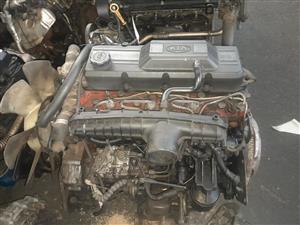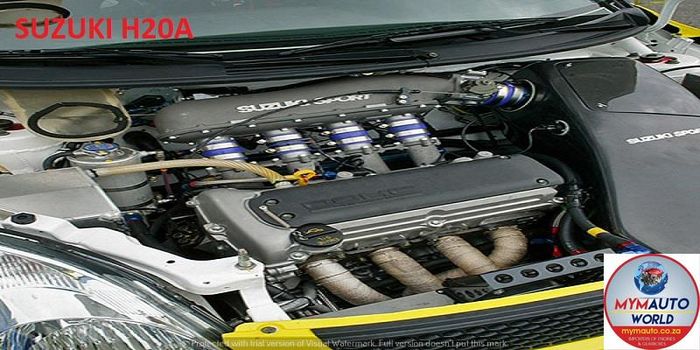Exploring the Inner Operation of a Compact Lorry's Engine System
As motorists, we frequently take for provided the elaborate processes that happen within the boundaries of our car's engine system. In this expedition of a small lorry's engine system, we will certainly decipher the internal operations of this mechanical symphony, shedding light on the secrets that drive us forward on our everyday trips.
Burning Refine Summary
The burning procedure in a portable car's engine system is an essential mechanism that effectively transforms gas into energy to power the vehicle. This procedure happens within the burning chamber of the engine, where gas and air mix, ignite, and produce controlled surges. The burning process includes 4 primary phases: intake, power, compression, and exhaust.
Throughout the consumption stage, the piston relocates downward, drawing in a blend of air and gas right into the combustion chamber. This down motion produces the power required to drive the automobile. This cyclic combustion procedure is basic to the procedure of a compact car's engine system, ensuring effective energy conversion for propulsion.
Piston and Cylinder Communication

The piston's exact fit within the cyndrical tube is vital for preserving ideal compression and stopping energy loss throughout combustion. Limited clearances in between the piston and cyndrical tube walls guarantee efficient sealing, permitting the piston to move efficiently without allowing gases to leakage past. Correct lubrication is additionally essential to lower rubbing and put on in between these elements, boosting long life and efficiency.
Moreover, the design and products utilized in making the piston and cyndrical tube influence engine performance and toughness. Modern engines usually use light-weight yet resilient materials like aluminum alloys for pistons and cyndrical tube linings to lower inertia and boost thermal performance. On the whole, the harmonious interaction in between the piston and cyndrical tube is essential to the engine's capability and general efficiency.
Fuel Injection System Functionality
Fuel injection systems in compact automobile engines play a vital function in precisely supplying fuel to the burning chamber for effective and regulated ignition. The fuel shot system works by injecting gas into the combustion chamber at the optimal minute during the engine's operation (opel corsa engine). This specific timing makes sure that the gas mixes equally with the air for correct combustion, causing improved gas performance and decreased exhausts
There are mainly 2 kinds of fuel shot systems used in portable car engines: port gas injection (PFI) and direct fuel shot (DFI) PFI systems inject gas right into the intake port prior to the consumption shutoff, while DFI systems inject fuel straight into the combustion chamber. Both systems have their benefits, with DFI using far better fuel atomization and PFI giving a more economical remedy.
Understanding Engine Cooling Systems
Reliable operation of a small car's engine depends greatly on the effectiveness of its cooling mechanisms. Engine cooling is crucial to avoid overheating, which can cause serious damage and decreased performance. The cooling system in a portable vehicle usually includes a number of parts interacting try this website to manage the engine temperature. One essential part is the radiator, which utilizes coolant to take in warm from the engine. As the warm Your Domain Name coolant streams with the radiator, it launches warm into the air, cooling down before returning to the engine. The water pump circulates the coolant through the engine and radiator, guaranteeing a constant flow to regulate temperature. Furthermore, the thermostat helps control the coolant flow to maintain optimal engine temperature. Some cars also have cooling followers that activate when added air conditioning is required, such as during rush hour or hot weather condition. Understanding these engine air conditioning devices is essential for maintaining the performance and durability of a compact vehicle's engine system.

Exhaust System Components Explained
The optimal performance of a small vehicle's engine air conditioning mechanisms depends upon a complementary system referred to as the exhaust system, which consists of various essential parts for guaranteeing efficient exhausts and engine efficiency. The exhaust system includes parts such as the exhaust manifold, catalytic converter, muffler, and tailpipe. The exhaust manifold gathers exhaust gases from the engine's routes and cyndrical tubes them to the catalytic converter. The catalytic converter then transforms hazardous toxins in the exhaust into much less dangerous emissions prior to launching them with the muffler and tailpipe.
One important element of the exhaust system is the oxygen sensor, which keeps track of the oxygen degrees in the exhaust gases to help control gas consumption and guarantee ideal engine efficiency. opel corsa engine. Additionally, the resonator may exist in some exhaust systems to reduce sound degrees. On the whole, the exhaust system plays an important function in keeping engine performance, this reducing dangerous exhausts, and ensuring a quieter driving experience for portable automobile proprietors

Verdict
In final thought, the small car's engine system is an intricate combination of parts that work with each other to promote the combustion procedure, transform gas into power, and expel waste gases. Comprehending the inner operations of the engine system, consisting of the piston and cyndrical tube communication, fuel shot system, engine cooling systems, and exhaust system elements, is essential for preserving optimal efficiency and efficiency of the vehicle.
The combustion procedure in a compact vehicle's engine system is a critical system that successfully transforms fuel into energy to power the car.Gas injection systems in portable automobile engines play a critical function in exactly delivering fuel to the combustion chamber for reliable and controlled ignition.There are primarily two kinds of fuel shot systems made use of in compact car engines: port fuel injection (PFI) and direct gas shot (DFI) Understanding these engine cooling devices is important for keeping the efficiency and longevity of a portable car's engine system.
The optimal performance of a portable car's engine cooling systems depends on a corresponding system recognized as the exhaust system, which makes up different vital elements for making sure effective emissions and engine efficiency.